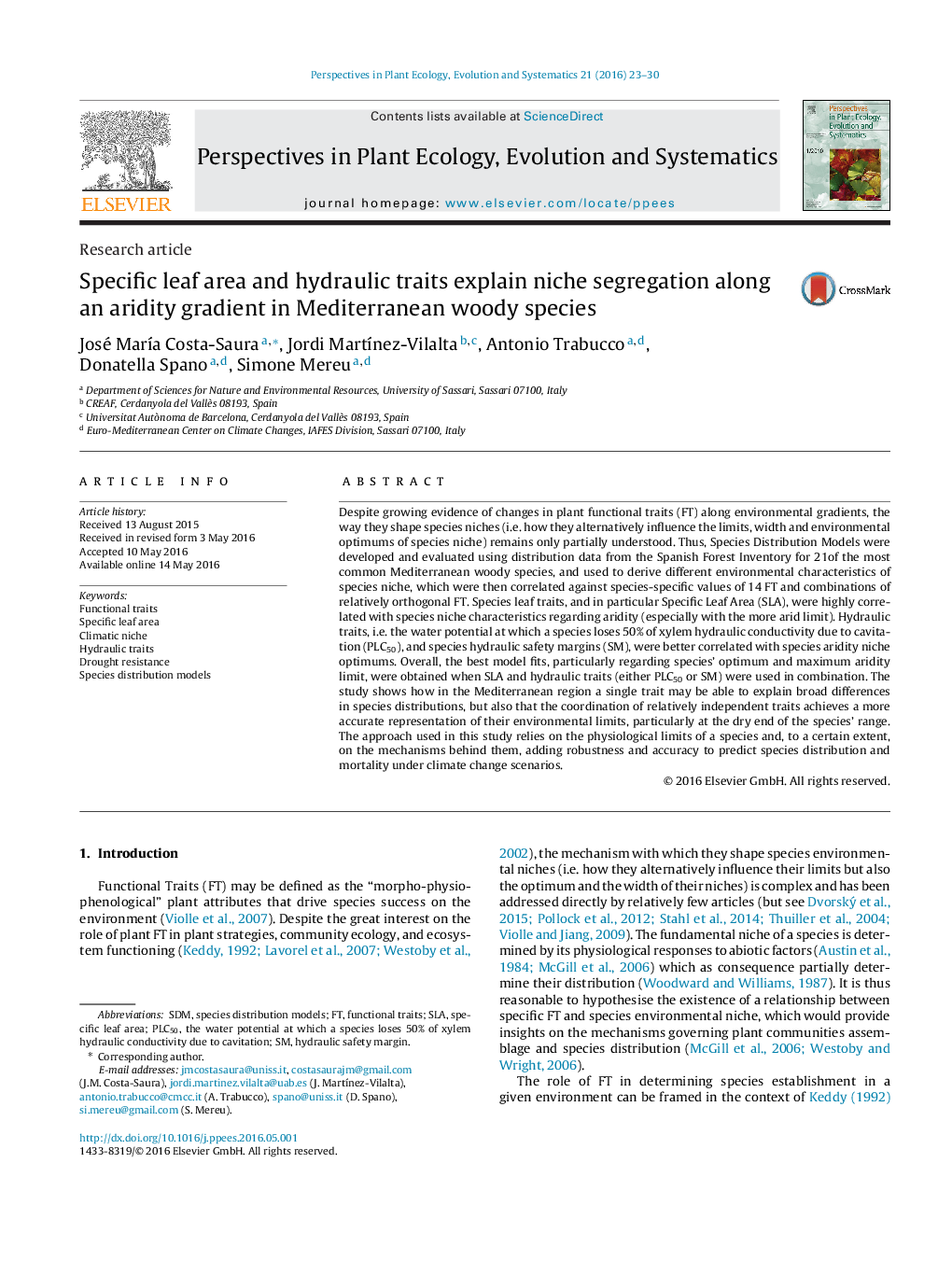| کد مقاله | کد نشریه | سال انتشار | مقاله انگلیسی | نسخه تمام متن |
|---|---|---|---|---|
| 4400903 | 1618599 | 2016 | 8 صفحه PDF | دانلود رایگان |
• Species niche characteristics can be predicted by their functional traits.
• In the Mediterranean Specific Leaf Area is highly correlated with species arid limits.
• Niche predictions are improved when specific traits combinations are used.
Despite growing evidence of changes in plant functional traits (FT) along environmental gradients, the way they shape species niches (i.e. how they alternatively influence the limits, width and environmental optimums of species niche) remains only partially understood. Thus, Species Distribution Models were developed and evaluated using distribution data from the Spanish Forest Inventory for 21of the most common Mediterranean woody species, and used to derive different environmental characteristics of species niche, which were then correlated against species-specific values of 14 FT and combinations of relatively orthogonal FT. Species leaf traits, and in particular Specific Leaf Area (SLA), were highly correlated with species niche characteristics regarding aridity (especially with the more arid limit). Hydraulic traits, i.e. the water potential at which a species loses 50% of xylem hydraulic conductivity due to cavitation (PLC50), and species hydraulic safety margins (SM), were better correlated with species aridity niche optimums. Overall, the best model fits, particularly regarding species’ optimum and maximum aridity limit, were obtained when SLA and hydraulic traits (either PLC50 or SM) were used in combination. The study shows how in the Mediterranean region a single trait may be able to explain broad differences in species distributions, but also that the coordination of relatively independent traits achieves a more accurate representation of their environmental limits, particularly at the dry end of the species’ range. The approach used in this study relies on the physiological limits of a species and, to a certain extent, on the mechanisms behind them, adding robustness and accuracy to predict species distribution and mortality under climate change scenarios.
Journal: Perspectives in Plant Ecology, Evolution and Systematics - Volume 21, August 2016, Pages 23–30
